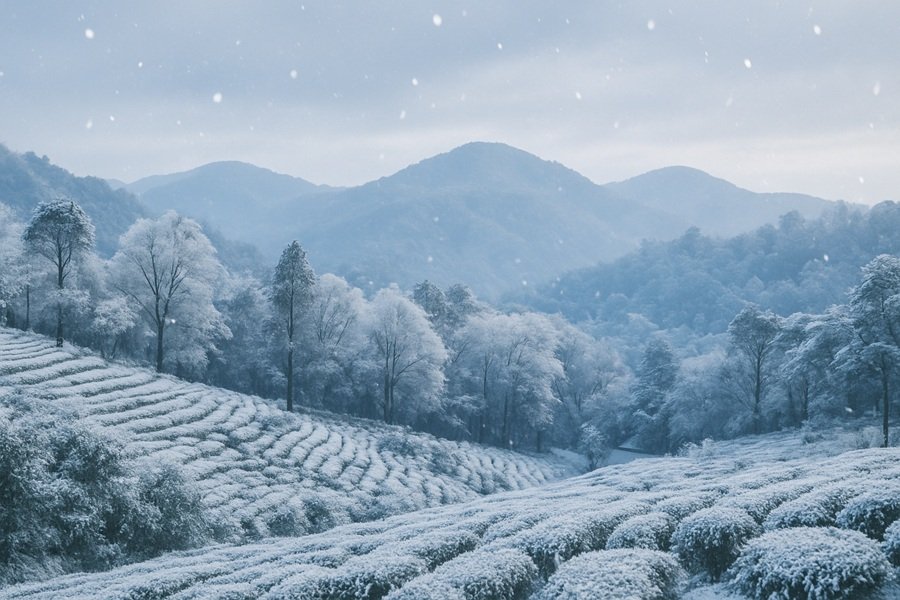
South India is renowned for its lush greenery, tropical beaches, hill stations, and warm climate. While images of snow-covered landscapes are usually associated with North India’s Himalayan belt, a common question among travelers is: “Does it snow in South India?”
In this article, we delve into the climatic patterns of South India, explore whether snowfall is possible, and shed light on Lambasingi, the one village often cited for its unique, chilly weather.
Overview: South India’s Climate
South India comprises five major states—Andhra Pradesh, Tamil Nadu, Karnataka, Kerala, and Telangana—along with the union territories of Puducherry and Lakshadweep. This region falls within the tropical climatic zone, and its weather is influenced by:
- Proximity to the equator
- Monsoonal winds from the Arabian Sea and Bay of Bengal
- Coastal plains and hilly interiors
The majority of South India experiences hot summers, moderate winters, and heavy rainfall during the monsoon. In most regions, winter temperatures rarely fall below 15°C.
So, Does It Snow in South India?
Yes — but only in very rare and highly specific conditions.
The only place where natural snowfall or frost has been reported in South India is Lambasingi, a small hamlet located in the Eastern Ghats of Andhra Pradesh.
Lambasingi: The “Kashmir of Andhra Pradesh”
📍 Location: Visakhapatnam district, Andhra Pradesh
⛰️ Altitude: Approximately 1,000 meters (3,280 feet) above sea level
🌡️ Winter Temperature: Drops as low as 0°C or slightly below during December–January
Lambasingi is the coldest inhabited place in South India, often blanketed in thick fog, dew, and frost during the winter months. While actual snowfall is extremely rare, locals and visitors have reported light snow-like frost and icy layers on leaves and grass during peak winter. These rare occurrences have earned Lambasingi the nickname “Kashmir of Andhra Pradesh.”
❄️ Important Note: There is no consistent scientific evidence of heavy snowfall in Lambasingi, but frost and icy deposits have been documented.
Why Snowfall is Rare in South India
Despite a few colder regions, snowfall is virtually absent in South India due to the following factors:
1. Geographical Latitude
South India lies between 8°N and 18°N, close to the equator. These latitudes typically experience tropical and subtropical climates, which are not conducive to snow formation.
2. Insufficient Altitude
Snowfall typically occurs at altitudes above 2,500–3,000 meters, but most South Indian hill stations are between 1,000–2,200 meters. Lambasingi is at around 1,000 meters, just enough for frost but not frequent snow.
3. Tropical Climate
The entire region is dominated by a tropical monsoon climate, meaning warm temperatures, high humidity, and seasonal rains rather than cold air masses required for snow.
Hill Stations That Experience Cold Weather (But Not Snow)
While snow is practically unheard of, several hill stations in South India do experience cold winters, morning frost, and hailstorms. These destinations are popular for their cool climate and scenic beauty:
1. Ooty (Tamil Nadu)
- Altitude: 2,240 meters
- Winter Temp: 2–10°C
- Known for fog, frost, and chilly winds. No snow, but occasional ground frost.
2. Kodaikanal (Tamil Nadu)
- Altitude: 2,133 meters
- Winter Temp: 4–12°C
- Morning frost during peak winter months.
3. Munnar (Kerala)
- Altitude: 1,532 meters
- Winter Temp: 5–10°C
- Reports of frost and cold snaps in January.
4. Coorg (Karnataka)
- Altitude: 1,150 meters
- Winter Temp: 8–12°C
- Misty mornings and cool nights.
Artificial Snow in South Indian Cities
Due to the lack of natural snowfall, several snow-themed amusement parks and attractions have been developed in metropolitan cities for entertainment purposes:
- Snow City in Bangalore
- Snow World in Hyderabad
- VGP Snow Kingdom in Chennai
These facilities use artificial snow-making machines and controlled environments to simulate snowfall, offering visitors a playful winter experience.
Frequently Asked Questions
Has it ever snowed in South India?
Natural snowfall is extremely rare. Only Lambasingi in Andhra Pradesh has reported light frost and very occasional snow-like experiences.
Which is the coldest place in South India?
Lambasingi is the coldest recorded location, where temperatures have fallen to 0°C or below.
Can I experience snow in any hill station in South India?
You may experience frost, fog, and hail in places like Ooty, Munnar, or Kodaikanal, but not actual snow.
Conclusion
Does It Snow in South India?
❄️ Technically, yes — but only in the village of Lambasingi under rare conditions.
For most parts of South India, snow is not part of the natural weather cycle due to its tropical climate and lower elevations. However, chilly retreats like Lambasingi, combined with misty hill stations such as Ooty and Munnar, offer a refreshing escape from the heat and provide frosty, winter-like experiences without snow.
So if you’re a snow lover hoping to build a snowman, you’re better off heading north. But if you’re looking for cool, misty hills and picturesque winter mornings, South India’s hill stations won’t disappoint.







